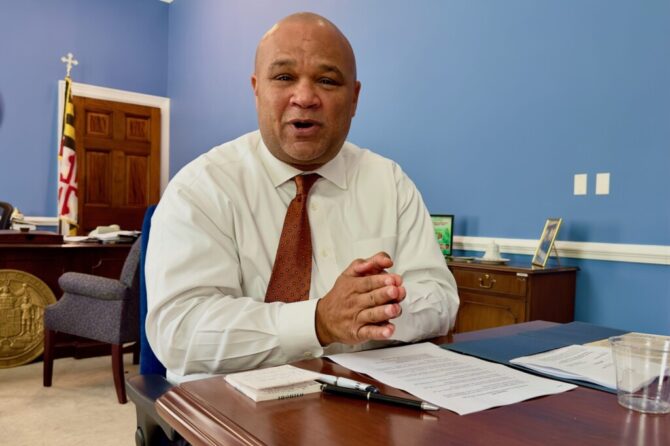A board charged with implementing a 10-year, multi-billion-dollar education reform plan in Maryland focused on efforts to create a diverse group of high-quality educators in the state during a meeting on Thursday.
The meeting was the last session in the Accountability and Implementation Board’s Implementation Planning Series, and covered the second “pillar” of the Blueprint for Maryland’s Future, the sweeping 2021 education reform bill.
Stanford University education professor emeritus Linda Darling-Hammond presented the board’s findings on how high-achieving education systems around the world achieved their success.
William “Brit” Kirwan, former chancellor of the University System of Maryland who headed the commission that drafted most of the Blueprint’s policies, said there were no good examples to follow from other states, so the commission started from scratch in developing policies.
Pillar 2 includes seven goals related to improving the quality of teaching in Maryland. Darling-Hammond said developing “career ladders” and “redesigning school systems” would likely be the hardest to achieve.
The career ladders will allow school systems to develop and reward teachers and promote high-achieving faculty members.
The United States has seen many efforts to create career ladders in its school systems come and go, according to the Stanford professor; the biggest challenge is making them sustainable. Maryland’s plan to incentivize teachers to get National Board Certification is “a good start,” she said.
The goal of “redesigning school systems” also presents a huge challenge.
Schools need to “finally shed the factory model,” Darling-Hammond said, but the systems the board examined are vastly different from many of those in the U.S.
One factor in the success of school systems abroad is that those countries treat teaching as a high-status profession, according to the board’s findings.
“They are thought of like architects and engineers, in terms of their sort of social standing,” Kirwan said.
Those nations accepted that it will take large amounts of funding in order to develop a high-quality teacher pool, Darling-Hammond said.
“These countries simply see it as an investment,” she said.
The desire to create a similar environment in Maryland influenced the recommendation of increasing licensing standards.
A third recommendation — to increase the amount of financial aid given to students pursuing teaching degrees and accreditation — is tied directly to the goal of recruiting a diverse pool of educators, she said.
“To diversify the teacher workforce the first thing you need to do is make it absolutely affordable, preferably free, to become a teacher,” Darling-Hammond said.
Countries with high educational achievement rates had many systems in place to develop a teacher’s skills, including pairing new teachers with mentors.
In Singapore, teachers are placed into professional collaboration teams where they work on publishing articles about their research when they aren’t teaching, according to Darling-Hammond.
Kirwan said it was hardest for the commission to reach a consensus on the Pillar 2 recommendations.
Sen. Paul Pinsky (D-Prince George’s), also a member of the commission, said a subcommittee spent nearly a year examining how their findings could be applied to Maryland schools without upending them.
“We didn’t want to blow up our system,” Pinsky said.
Pinsky said the commission’s difficulty in finding consensus on reforms for teachers and teaching means it also is likely to be difficult to see the proposed reforms to fruition.
He said the board should expect pushback on some proposed changes and should consider feedback from teachers about the proposals, but should also give the reforms enough time to be effective before considering changes.
“Until there’s a hue and cry that crosses, geography, race, and everything else where everyone is saying the same thing ‘You need to tweak this or change this.’ I think you got to hold on to it,” Pinsky said. “But you don’t want to be too rigid.”
This article was written by Maryland Matters, read more stories like this here.
Photo: Photo by Drazen Zigic/Getty Images.










